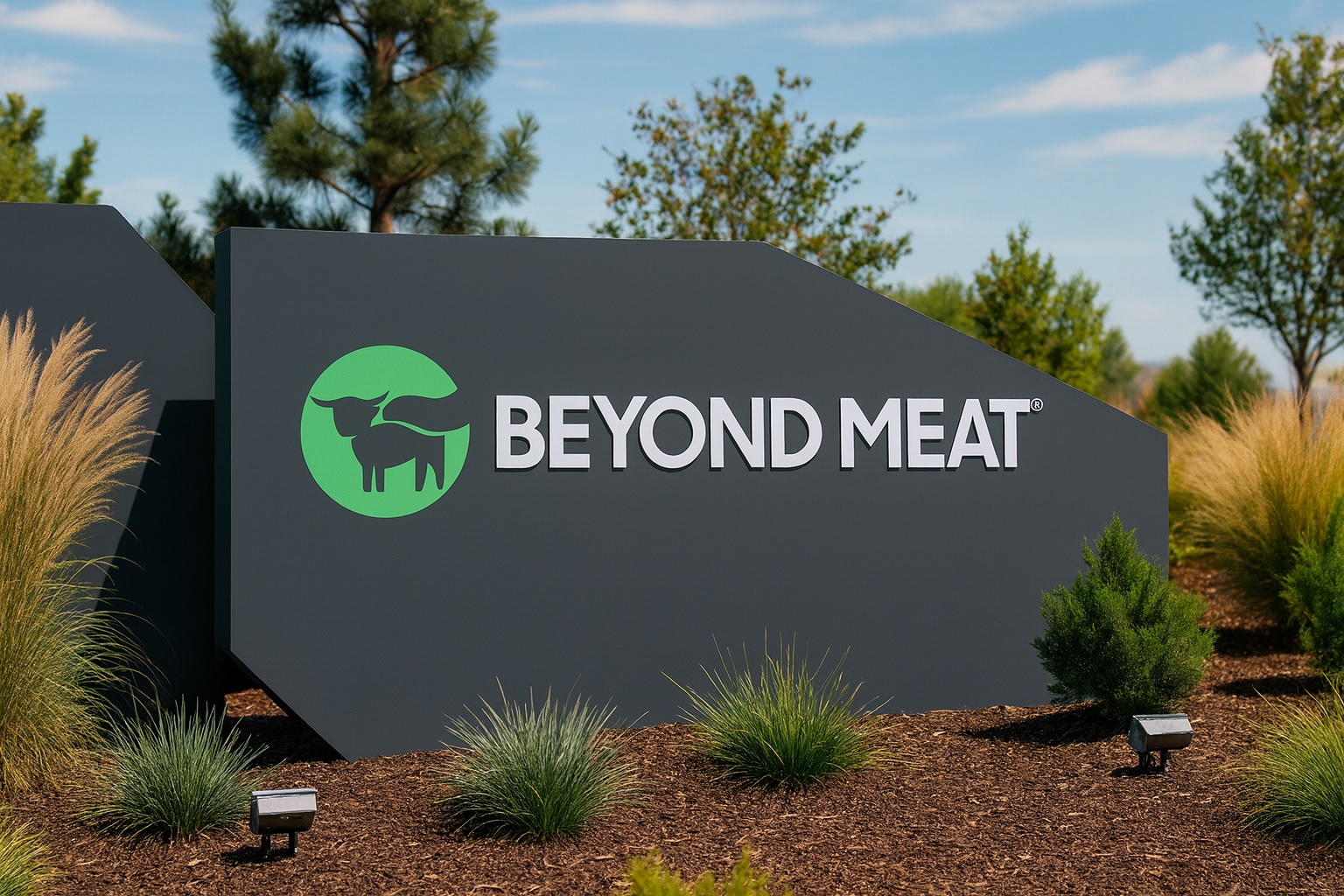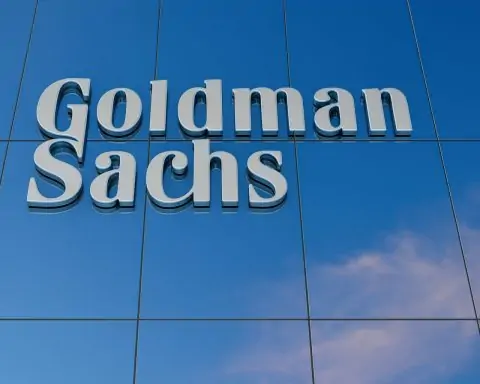- Current Price & Volatility: BYND was around $1.65 per share as of Oct 30, 2025 [1]. That marks a ~6.6% drop in 24 hours and a ~70% decline from its early-October highs [2]. Over the past year BYND has tumbled ~74% [3]. For context, the stock once hit an all-time high of $239.71 in July 2019 and an all-time low of $0.50 on Oct 16, 2025 [4].
- September–October Frenzy: In mid-October, BYND staged an extraordinary short-squeeze rally. The stock rocketed from about $0.50 on Oct 16 to multi-dollar levels over the next week – climbing roughly 600% to $3.62 by Oct 21 [5]. In intraday trading Oct 22 it briefly touched the $5–$6 range [6]. However, this “meme stock” rally quickly reversed: BYND slid back to ~$2.19 by Oct 24 [7] and ~$1.65 by Oct 30 [8].
- Trading Volume & Market Cap: Retail traders piled in: on Oct 21 alone they bought nearly $35 million of BYND shares (a record one-day inflow) [9]. BYND’s market capitalization spiked to about $656 million (up ~440% week-over-week, reflecting the new share issuance) [10]. This volatility contrasts with BYND’s slumping fundamentals.
- Debt Restructuring & Dilution: On Oct 15, Beyond Meat completed a debt-for-equity swap to avoid default. It converted ~$1.15 billion of debt into fresh notes and issued ~316 million new shares [11]. That move slashed the company’s debt to ~$250 million but massively diluted legacy shareholders: the float will approach ~393 million shares (vs ~77 million pre-swap) [12]. Founder/CEO Ethan Brown stepped down from the board (remains CEO), and two directors left amid this shake-up [13].
- Recent News Catalysts: Late October’s frenzy was triggered by several upbeat announcements amid bearish fundamentals. Key news included a new Walmart distribution deal – expanding Beyond Burgers and other products into ~2,000 Walmart stores [14] – and adding BYND to the Roundhill “Meme” ETF (10.2% weight) [15]. On Oct 21 BYND stock jumped 146% following the Walmart news [16]. The company also launched a direct-to-consumer website offering limited-edition products [17]. However, analysts note these positives pale beside the core demand slump.
- Financials (Q2 2025): In Q2 2025 Beyond Meat reported $75.0 million in net revenues, down ~19.6% YoY [18], and a net loss of about $33.2 million [19]. Gross margin fell to ~11.5% (vs 14.7% year-ago) [20]. Cash on hand was ~$117 million vs ~$1.2 billion of debt [21]. Management said cost cuts and restructuring are underway.
- Guidance (Q3 2025): On Oct 24 Beyond Meat guided Q3 revenue at about $70 million (consensus ~$68.9M) [22], in line with its prior $68–73M range. Operating expenses are forecast at ~$41–43M [23], and a “significant” impairment charge is expected. This implies continuing revenue decline (~–12–13% YoY), as echoed by Motley Fool: Q3 sales are seen down ~13% YoY with gross margins ~10–11% [24]. Beyond will report final Q3 results on Nov 4, 2025.
- Analyst Sentiment: Wall Street is overwhelmingly bearish on BYND. Most firms have sell or underperform ratings [25]. As of late Oct, the consensus 12-month target is roughly $3.09 [26] (about 70% above the then-current price), but targets range widely from ~$0.81 to ~$6.90 [27]. Notably, Mizuho cut its PT to $1.50 (rating Underperform) and TD Cowen to $0.80, citing heavy dilution [28]. TD’s analysts warned of an “existential threat” if Beyond can’t rapidly stabilize its sales and cash flow [29].
- Short Interest: BYND was one of the most-shorted stocks on Nasdaq. Short interest (as percent of float) reportedly exceeded 80% by Oct 22 [30]. This extreme short ratio helped fuel the squeeze – but also means potential volatility. For now, many analysts see any rebound as unsustainable.
- Competition: Beyond Meat operates in a crowded field. Tyson Foods (TSN) briefly owned ~5–6.5% of BYND in 2016–2019 [31] (since sold), and Tyson now sells its own “Raised & Rooted” plant-based products (nuggets, burgers, sausages) [32]. Impossible Foods (private) is another rival, pivoting toward clean ingredients and niche marketing (e.g. NSF-certified Impossible Beef for athletes [33]). Both face similar demand headwinds: U.S. plant-based meat sales have fallen in recent years [34] amid competition from whole-food alternatives.
- Sustainability/ESG: Beyond Meat’s brand is built on environmental and animal-welfare credentials. A 2018 life-cycle study found a Beyond Burger patty emits ~90% less greenhouse gases, uses >99% less water, and 93% less land than a comparable beef patty [35]. These ESG advantages attracted investors and partners. For example, Tyson’s 2017 investment in Beyond was framed as “meeting protein demand sustainably” [36]. Beyond continues to market its products as eco-friendly, though recent market data suggests consumer health and price concerns may now outweigh ESG appeal [37] [38].
BYND Stock Performance & Recent Volatility
Beyond Meat’s share price has oscillated wildly in mid–late October 2025. In mid-October, after hitting all-time low ~$0.50 on Oct 16, the stock became the poster child of a new meme-stock squeeze. Over the week to Oct 22, BYND “rose nearly seven-fold,” according to Reuters [39]. On Oct 20 the stock jumped +120%, then +146% on Oct 21 [40], as hordes of retail traders piled in. By Oct 21’s close, BYND traded around $3.62 [41] – roughly 7x its price from five days earlier. In intraday action Oct 22 it briefly touched ~$5–6 [42]. This surge was driven not by any sudden sales turnaround, but by extreme short-covering: over 80% of BYND’s float was sold short [43] [44].
However, the “meme” rally proved ephemeral. By Oct 22 end-of-day BYND slipped back to ~$3.58, then $2.84 on Oct 23, and $2.19 on Oct 24 [45]. The stock then gave back most of its gains; on Oct 30 it closed around $1.65 [46]. Thus the rally’s height was ~1300% above mid-Oct lows [47], but by late Oct the price was ~78% below its early October peak [48]. Trading volumes soared throughout: Vanda Research notes retail investors spent nearly $35M on BYND on Oct 21 alone (the largest single-day purchase in Vanda’s data) [49]. Even so, this volatility has left BYND far from its glory days.
Image: Beyond Meat’s 2019 IPO at Nasdaq (New York); from a high of ~$239 the stock collapsed into penny-stock territory by Oct 2025 [50].
Since its 2019 IPO, BYND’s journey has been dramatic. The stock peaked at ~$239 in 2019 [51] but has lost most of that value (down ~97% from all-time high [52]). The mid-Oct short squeeze was a brief anomaly; most technical analysts view the pattern as a classic “dead-cat bounce.” As one Reuters analyst quipped, BYND became the “classic meme cocktail” – “loss-making, heavily shorted, [and] easy to understand” [53]. Ivan Cosovic of Breakout Point colorfully noted retail traders were having “meme-fun,” joking BYND’s price rise might just be “fake-meat humble pie” rather than a true rebound [54]. In short, after this week’s excitement, most professional investors expect the stock to retest much lower levels once the mania fades.
Recent News & Catalyst Events
Several news items fueled October’s swings. The big Walmart distribution deal was a genuine positive: on Oct 21 Beyond Meat and Walmart announced that new Beyond Burger 6-packs and plant-based chicken tenders and Korean BBQ “beef” would roll out to over 2,000 Walmart stores [55]. CEO Ethan Brown touted the move as giving “more consumers access to Beyond’s clean and nutritious plant protein” at a lower unit cost [56]. Unsurprisingly, that announcement caused BYND shares to spike 146% on Oct 21 [57].
Coinciding with this, news outlets reported a wave of online interest. BYND became a top-trending ticker on social media; one user-led ETF (Roundhill’s MEME) added Beyond Meat at over 10% weighting [58]. Such momentum attracted retail inflows – Reuters notes the meme frenzy alone had driven nearly $35M into BYND on Oct 21 [59]. However, analysts caution the long-term fundamentals didn’t match this hype. As Reuters put it, the Walmart deal and small product launches were insufficient to justify the meteoric stock moves [60] [61].
Behind the scenes, Beyond Meat also took steps to stabilize its finances. The debt restructuring completed mid-October was intended to avert bankruptcy: it cut short-term debt by ~$900M through an early debt swap [62]. That exchange issued about $208.7M in new convertible notes and over 316M new shares [63]. By replacing ~$1.15B of bonds with longer-dated debt, the company reduced immediate default risk to ~$250M in net debt [64]. But the dilution was extreme: existing shareholders saw their stakes shrink to around 20% of the company overnight. The lock-up expiration on Oct 16 unleashed those new shares, contributing to the share-price crash into penny-stock levels [65].
In conjunction, Beyond made some executive changes. Founder Ethan Brown resigned from the board (though he remains CEO) and two long-tenured directors left, replaced by a bondholder representative [66]. Beyond is reportedly hiring a “Chief Transformation Officer” and cutting workforce in an attempt to cut costs (the board changes and layoffs were reported in late summer). These moves were largely overshadowed by the market storm, but they signal how dire the situation is.
By Oct 31, trading volumes and share count had also shifted. TradingView data shows BYND’s market cap is now ~$656M (reflecting ~393M shares) [67]. That is ~30% of its value just two weeks earlier. Over just the past week the cap jumped +440% as share count ballooned [68]. In practical terms, the stock is highly volatile and much more liquid than before – but from an extremely low base.
Financial Results & Outlook
Beyond Meat’s latest quarter confirmed the sales slump. In Q2 2025 (ended June 28), revenues fell to $75.0M (–19.6% YoY) [69], missing expectations. Net loss was $33.2M, yielding an EPS of about –$0.40 (vs –$0.38 expected) [70] [71]. Gross margin plummeted to ~11.5% (from 14.7% a year prior) due to heavy discounting and SKU rationalization [72]. The company ended Q2 with only $117M cash on hand against $1.2B of debt [73]. Underlying: Domestic retail sales of Beyond products have been shrinking for several years, and its new plant-based chicken and pork lines have struggled to gain traction. Management admits the legacy “Beyond Burger” still dominates revenue, and that demand isn’t bouncing back.
Looking ahead, the company issued preliminary Q3 guidance on Oct 24. It forecasts roughly $68–73M in revenue [74], about flat with its previous outlook. (Analysts had expected ~$68.9M [75].) On the call, Beyond also flagged Q3 operating expenses of ~$41–43M and indicated a “significant impairment” charge, likely on intangible assets [76]. In sum, the guidance implies Q3 sales ~12–13% below last year’s $80M, consistent with continued downturn. (Indeed, Motley Fool reports Q3 sales are seen down ~13% YoY with gross margins only ~10–11% [77].) Beyond said it will report results on Nov 4, but no analysts expect a profit in the near term – instead, investors watch cash burn and debt.
Given this trajectory, Wall Street forecasts are extremely downbeat. Aside from the recent volatility, most firms believe BYND will continue to lag. As TS2.tech summarized, Beyond’s revenue has declined annually since 2022, and it has never reported a full-year profit [78]. Analysts are dialing in lower targets: the late Oct average price target is ~$3.09 [79] (which now trades above the current price), but firms range from pessimistic sub-$1 to optimistic ~$6–7 [80]. Mizuho’s $1.50 and TD Cowen’s $0.80 forecasts [81] suggest most see the stock well under current levels unless something changes. In short, even if short-term rallies occur, the fundamental outlook is grim. Motley Fool bluntly warns that “the long-term outlook for its stock isn’t promising,” given the weak core business [82].
Analyst Perspectives & Expert Commentary
A number of market watchers have chimed in on BYND’s roller-coaster. Data strategist Ivan Cosovic (Breakout Point) captured the mood, calling BYND the “classic meme cocktail” (loss-making, highly shorted, easy to explain) [83]. He quipped that retail traders were “meme-fun” buyers, joking about a slice of “fake-meat humble pie” for short-sellers [84]. That colorful language underscores how detached the recent trade was from fundamentals.
On the flip side, credit analysts are fretting over Beyond’s survival. Tim Hynes of Debtwire noted that the company has just enough “liquidity to go for the next year, but they have to figure out their growth prospects” [85]. In other words, the debt swap bought time, but investors now need a credible turnaround plan. AJ Bell’s Danni Hewson raised a broader concern: as U.S. consumers shift toward simpler, whole foods, plant-based “imitation meat” faces credibility questions [86]. She pointed out that “lots of questions [are] raised about how plant-based meat is produced in an age when many people are choosing simple alternatives like beans and pulses” [87]. This reflects a media narrative that Beyond’s ultra-processed products may have fallen out of favor.
Among sell-side analysts, sentiment is dire. TS2.tech reports that most analysts rate BYND a Sell, with median 12-month targets around ~$2 [88]. Even relatively optimistic firms have cut their outlooks. For example, after the dilution deal, Mizuho reiterated an Underperform rating and cut its PT from $2 to $1.50 [89]. TD Cowen likewise slashed its target to $0.80, warning of an “existential threat” if Beyond cannot reverse its decline [90] [91]. (TD’s note explicitly tied the cut to the share-equity swap and its impact.) One economist observed that if meme traders vacate, “fundamentals will reassert themselves” [92] – which today means shrinking sales, minimal profits, and high debt.
On the other hand, a few analysts urged caution even on the way down. Some noted the high volatility implies that shorting BYND could be risky: a Nasdaq report even suggests “shorting shares would probably be a very bad move” given the stock’s meme status [93]. But that was qualified by the same report stating investors should still be advised to stay away given the long-term challenges [94]. In practice, virtually all price models have been torn up in this environment; analysts are mostly watching developments (earnings, partnerships, liquidity) rather than offering bullish guidance.
Competitive and ESG Context
Beyond Meat’s struggles must be seen in the broader market context. Its main rival Impossible Foods has faced similar headwinds. VegNews reports that Impossible is pivoting away from the ultraprocessed label, focusing on clean ingredients and niche marketing (e.g. athlete-targeted pop-up events, NSF certification for Impossible Beef) [95]. Beyond itself is trying a similar play: its new Beyond Ground burger contains only four ingredients (pea protein, canola oil, coconut oil, seasoning) [96]. CEO Ethan Brown explained this strategy as “going beyond just mimicking another species… to provide something capable of confidently standing on its own as a center-of-plate protein” [97]. This marks a shift from “me-too” marketing to focusing on health and simplicity – perhaps to recapture skeptical consumers.
Meanwhile, large meat companies have not ignored plant-based trends. Tyson Foods (NYSE: TSN), which initially invested in Beyond in 2016, sold its stake by 2019 [98] and now aggressively markets its own plant products under the Raised & Rooted brand [99]. Tyson’s Q3 2025 results (Aug 2025) show solid growth in its core business [100], and management emphasizes a “multi-protein” strategy – including alternative proteins – as driving resilience [101]. In short, Beyond competes with well-capitalized incumbents entering the space.
On the ESG front, Beyond Meat pioneered the sustainability pitch for meat substitutes. The University of Michigan’s life-cycle analysis famously found a Beyond Burger uses 90% less GHG emissions, 99% less water, and 93% less land than a quarter-pound of beef [102]. This data has underpinned Beyond’s “better for the planet” branding. Such claims resonate with environmentally-conscious investors and consumers. Tyson’s sustainability chief even said Tyson’s investment in Beyond was part of an effort to “meet protein demand sustainably” [103]. However, macro trends have shifted: as Reuters notes, rising interest in weight-loss drugs and low-carb diets (the “Make America Healthy Again” movement) is dampening demand for all high-protein foods [104] [105]. In other words, Beyond’s ESG story is still solid on paper, but external dietary trends and inflation pressure are “expediting its decline” [106] [107].
Short-term vs. Long-term Outlook
In the short term, Beyond Meat’s stock will likely continue to track headlines. The upcoming Q3 earnings (Nov 4) and any news of new partners or financing could sway the price. If meme trading persists, we could see volatile swings in either direction (some argue a rebound is possible if positive surprises occur). However, most professional analysis suggests any rally is tenuous. As noted above, even analysts acknowledging the meme factor caution that BYND’s “huge gains were largely divorced from dramatic fundamental improvements” [108]. In practice, the stock is likely to trade within a wide range on low fundamentals, barring another retail rush.
Long term, the outlook is far murkier. Beyond Meat’s business model is unproven in a low-growth environment. It has never achieved profitability, and its core retail sales have been declining. Institutional analysts worry about dilution and cash burn. Some predict bankruptcies as possible if the company can’t stabilize growth. For example, Cowen’s “existential threat” warning suggests a very negative view of BYND’s longer horizon [109]. Conversely, if Beyond can dramatically cut costs, innovate (e.g. new products, partnerships like McDonald’s McPlant), or ride a recovery in flexitarian demand, it could survive. But given current indicators, most forecasts have BYND struggling or stagnating well below earlier highs.
Conclusion
Beyond Meat’s October 2025 saga – a meteoric meme-stock run followed by a brutal crash – has underscored both the potential and peril of investing in volatile “story” stocks. On the one hand, BYND’s core idea (tastier plant-based meat) and big partnerships (Walmart, McDonald’s, etc.) still hold intrigue. On the other, the company’s financial track record is weak and consumer trends are shifting. Expert consensus is clear: short-term price swings may continue, but without a genuine turnaround in sales and cash flow, the stock’s long-term outlook remains very dim. Investors should be extremely cautious.
Image: Beyond Meat products on a grocery shelf. The company’s plant-based burgers and sausages aim to cut carbon footprint dramatically (90% fewer GHG vs beef [110]), part of its ESG appeal amid the plant-protein trend.
Sources: Contemporary news and analysis, including Reuters, AP News, Investing.com, Nasdaq data, industry press, and research reports [111] [112] [113] [114] [115] [116] [117] [118]. (Ts2.Tech, a stock analysis blog, was used for expert commentary and timeline details [119] [120].) The information reflects data available as of Oct 31, 2025.
References
1. www.tradingview.com, 2. www.tradingview.com, 3. www.tradingview.com, 4. www.tradingview.com, 5. ts2.tech, 6. ts2.tech, 7. ts2.tech, 8. www.tradingview.com, 9. www.reuters.com, 10. www.tradingview.com, 11. ts2.tech, 12. ts2.tech, 13. ts2.tech, 14. ts2.tech, 15. www.reuters.com, 16. www.reuters.com, 17. apnews.com, 18. www.investing.com, 19. www.investing.com, 20. www.investing.com, 21. www.investing.com, 22. www.reuters.com, 23. www.reuters.com, 24. www.nasdaq.com, 25. ts2.tech, 26. www.nasdaq.com, 27. www.nasdaq.com, 28. www.investing.com, 29. ts2.tech, 30. www.reuters.com, 31. www.fooddive.com, 32. www.fooddive.com, 33. vegnews.com, 34. vegnews.com, 35. css.umich.edu, 36. www.tysonfoods.com, 37. vegnews.com, 38. www.reuters.com, 39. www.reuters.com, 40. ts2.tech, 41. ts2.tech, 42. ts2.tech, 43. www.reuters.com, 44. ts2.tech, 45. ts2.tech, 46. www.tradingview.com, 47. www.nasdaq.com, 48. www.nasdaq.com, 49. www.reuters.com, 50. www.tradingview.com, 51. www.tradingview.com, 52. ts2.tech, 53. www.reuters.com, 54. www.reuters.com, 55. ts2.tech, 56. ts2.tech, 57. www.reuters.com, 58. www.reuters.com, 59. www.reuters.com, 60. ts2.tech, 61. www.reuters.com, 62. ts2.tech, 63. ts2.tech, 64. ts2.tech, 65. ts2.tech, 66. ts2.tech, 67. www.tradingview.com, 68. www.tradingview.com, 69. www.investing.com, 70. www.investing.com, 71. www.investing.com, 72. www.investing.com, 73. www.investing.com, 74. www.reuters.com, 75. www.reuters.com, 76. www.reuters.com, 77. www.nasdaq.com, 78. www.reuters.com, 79. www.nasdaq.com, 80. www.nasdaq.com, 81. www.investing.com, 82. www.nasdaq.com, 83. www.reuters.com, 84. www.reuters.com, 85. www.reuters.com, 86. www.reuters.com, 87. www.reuters.com, 88. ts2.tech, 89. www.investing.com, 90. ts2.tech, 91. www.investing.com, 92. ts2.tech, 93. www.nasdaq.com, 94. www.nasdaq.com, 95. vegnews.com, 96. vegnews.com, 97. vegnews.com, 98. www.fooddive.com, 99. www.fooddive.com, 100. www.tysonfoods.com, 101. www.tysonfoods.com, 102. css.umich.edu, 103. www.tysonfoods.com, 104. www.reuters.com, 105. www.reuters.com, 106. www.reuters.com, 107. www.reuters.com, 108. www.nasdaq.com, 109. ts2.tech, 110. css.umich.edu, 111. ts2.tech, 112. www.tradingview.com, 113. ts2.tech, 114. www.reuters.com, 115. www.investing.com, 116. www.reuters.com, 117. www.investing.com, 118. css.umich.edu, 119. ts2.tech, 120. www.investing.com









